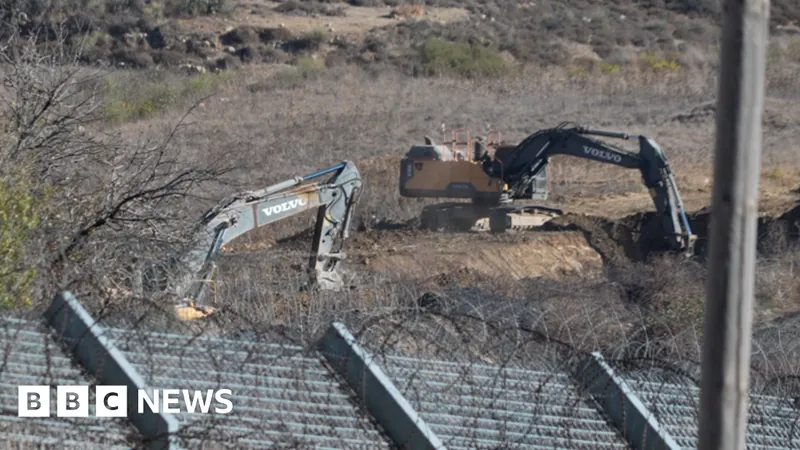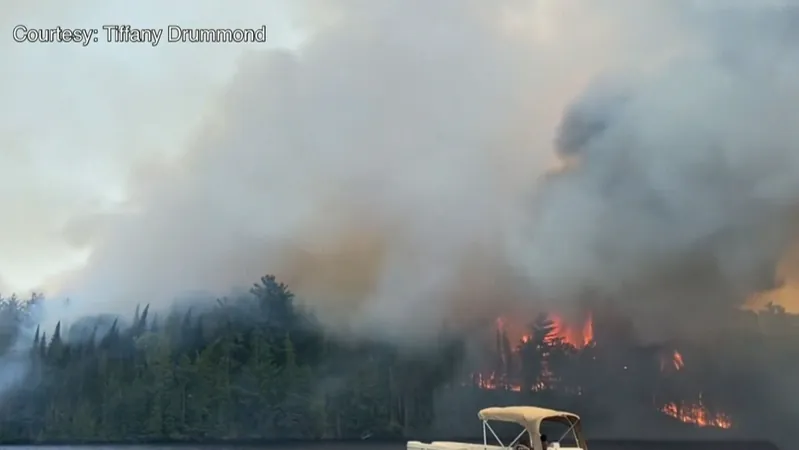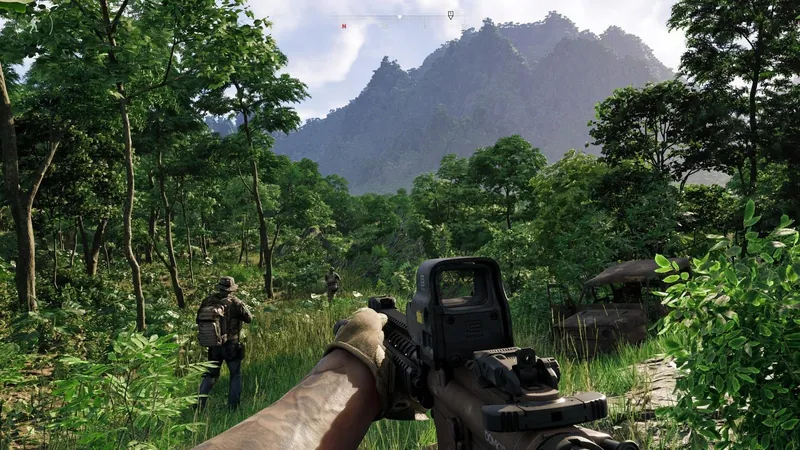
UN Condemns Israeli Construction Near Syrian Buffer Zone, Escalating Tensions on Golan Heights
2024-11-13
Author: Emily
The United Nations has raised alarm bells over recent Israeli construction activities along a demilitarized buffer zone with Syria, asserting that these actions amount to “severe violations” of a ceasefire agreement that has stood for half a century. The situation poses a significant risk of escalating tensions in the already volatile region of the Golan Heights.
Recent satellite imagery indicates that Israel has been actively digging trenches and constructing earth berms along what is known as the Area of Separation (AoS). Ground footage captured by the BBC reveals ongoing construction activities near Majdal Shams, alongside military vehicles, suggesting further earthworks in rural territories believed to be under Israeli control.
The UN Disengagement Observer Force (UNDOF) has acknowledged that while the majority of these constructions may not breach the AoS boundaries, certain trenches—excavated under the protection of heavy military vehicles—intrude into it. UN observers have noted instances where Israeli army vehicles and personnel have also crossed into the buffer zone.
At UNDOF’s Camp Ziouani, Israeli and Syrian forces remain in close proximity, with a visible Syrian flag beyond the separation zone, signaling the ongoing tension. The Chief of Mission, Bernard Lee, detailed that two significant trench lines and several smaller ones have been dug, each approximately 6 meters wide, with intrusions into the AoS measured in just a few meters.
Currently, UN observers monitor the 80-kilometer stretch of the buffer zone around the clock. However, they have been unable to provide immediate visual evidence of the reported Israeli incursions. The request for BBC access to various observation posts for filming has not been granted, casting shadows on transparency in the situation.
The Area of Separation was implemented as a crucial part of the 1974 ceasefire agreement following Israel's occupation of the Golan Heights. The terms necessitate that Israeli forces remain west of the so-called Alpha Line, while Syrian forces must stay east of the Bravo Line, reinforcing the delicate balance of power in the region. Israel’s annexation of the Golan Heights in 1981 is still not recognized internationally, although the United States did acknowledge it in 2019.
The occupied territory is home to Israeli settlers and approximately 20,000 Druze Syrians who remained on the land after Israel's capture. Despite concerns about Iranian militia groups in Syria, peace at the frontier has been relatively stable as Israeli forces have focused their attention on combating Iranian influences elsewhere, notably in Gaza and Lebanon, over the past year.
Nevertheless, UNDOF reported that Syrian authorities have “strongly protested” these Israeli construction activities, and the UN has consistently raised concerns regarding these alleged violations with Israeli military officials. An IDF spokesperson, Lt Col Nadav Shoshani, defended these actions, claiming that the trenches serve to prevent infiltrations by Iran-backed groups in Syria and do not violate the ceasefire agreement.
The tensions have surged in the wake of the Hamas attacks on October 7, with the Israeli military boosting defenses in response to perceived threats from neighboring countries. Bernard Lee remarked that while these trenches may deter conventional vehicle assaults, they do little to mitigate the risk posed by drones and missiles from Iranian-supported militias, which frequently threaten Israeli security.
Moreover, concerns about Syria acting as a conduit for weapon smuggling to Hezbollah in Lebanon persist. Lee noted that commercial smugglers have been using the AoS to transport goods between Syria and Lebanon, exploiting newly made access routes to enhance illicit trade.
Calls for accountability have been made on both sides, as Israel claims frequent violations by Syria, and Iranian-backed militias pose a continuing challenge to both the Israeli Defense Forces and the Syrian government, led by President Bashar al-Assad. As the complexities of this multifaceted conflict unfold, the delicate balance of power in the Golan Heights remains precarious, with international attention crucial for maintaining peace in the region.









 Brasil (PT)
Brasil (PT)
 Canada (EN)
Canada (EN)
 Chile (ES)
Chile (ES)
 España (ES)
España (ES)
 France (FR)
France (FR)
 Hong Kong (EN)
Hong Kong (EN)
 Italia (IT)
Italia (IT)
 日本 (JA)
日本 (JA)
 Magyarország (HU)
Magyarország (HU)
 Norge (NO)
Norge (NO)
 Polska (PL)
Polska (PL)
 Schweiz (DE)
Schweiz (DE)
 Singapore (EN)
Singapore (EN)
 Sverige (SV)
Sverige (SV)
 Suomi (FI)
Suomi (FI)
 Türkiye (TR)
Türkiye (TR)